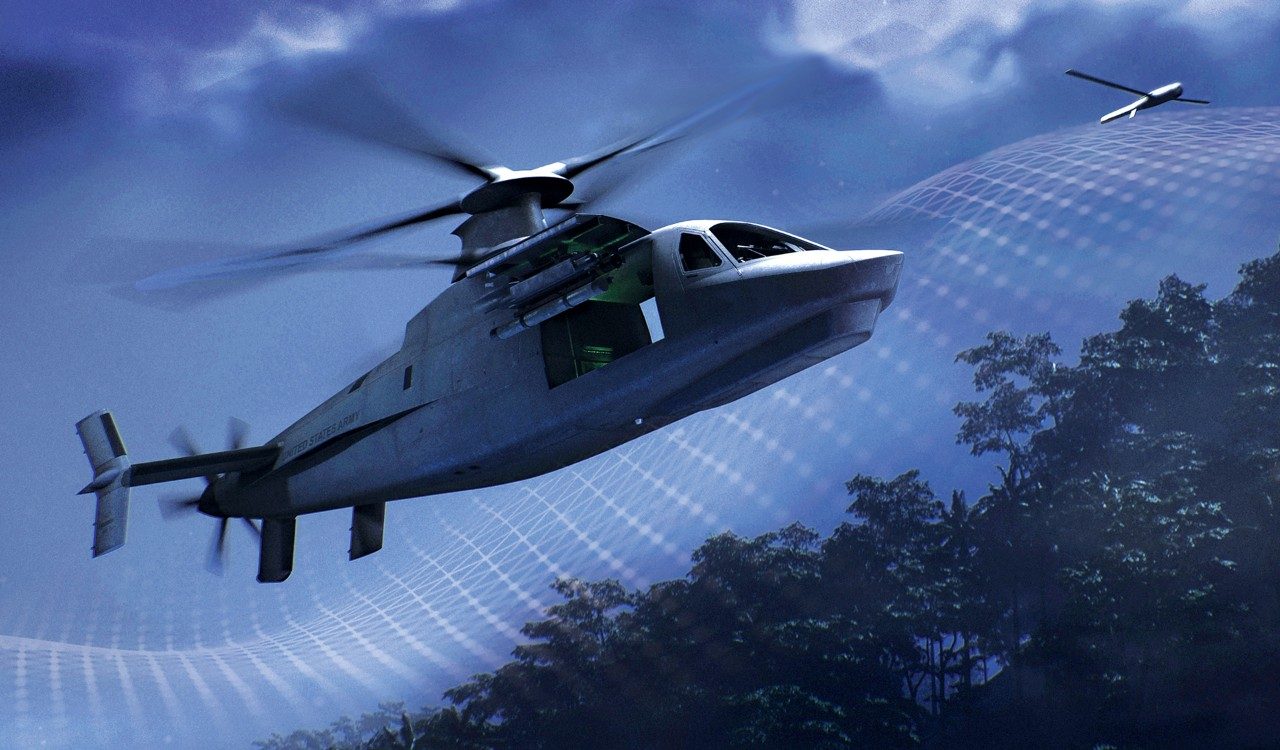The Army’s New Piloted Scout Helicopter is Critical for Tomorrow’s Missions
Nearly a decade ago, the U.S. Army retired its last helicopter designed specifically for the attack reconnaissance mission – the OH-58 Kiowa Warrior. Since then, a combination of AH-64 Apache helicopters and unmanned aerial vehicles (UAVs) have filled in, performing the attack reconnaissance mission the best they could.
But near-peer threats demand next-generation aircrafts specially designed to stay ahead of the fight through continuous evolution. Unlike the Kiowa Warrior, the Future Attack Reconnaissance Aircraft (FARA), Army Aviation’s top modernization priority, is a Division, Corps and Joint Forces-level strategic asset operating deep in the battlespace. And it’s the only reconnaissance platform that delivers deep reach providing a level of survivability never before obtained in Army Aviation.
Delivering Mission-Critical Capabilities at the Front of the Fight
Sikorsky, a Lockheed Martin Company and one of two companies vying for FARA, is offering RAIDER X®. Flying low and fast to stay hidden below the tree line, RAIDER X will deliver crucial intelligence and keep forces connected through a secure mesh network. Built to find, fix and finish anti-access/anti-denial (A2AD) and enemy forces, RAIDER X operates in contested environments at the front of the fight. It’s a sophisticated sensor, a central network hub and a powerful armed reconnaissance helicopter all in one.
“RAIDER X is a complete weapon system,” said Jay Macklin, Sikorsky’s director of Future Vertical Lift Business Development and a retired Army Aviator. “It provides significant reach, survivability and lethality – much more than exists with today’s enduring fleet. RAIDER X will be plugged into the network as a key part of the combined arms force, enabling the ground commander to see and shape the battlefield.”
With an increasingly complex future threat environment and swift pace of technological change, enabling rapid upgrades and putting real-time decision making closer to the fight is critical for mission success. RAIDER X is purpose-built with the Army’s Modular Open Systems Approach (MOSA) to provide leap-ahead capability and enable rapid upgrades. Its adaptability is the starting point for decades of innovation.
This merger of superior physical performance with transformational digital capabilities is exactly what Lockheed Martin’s 21st Century Security strategy seeks to achieve – helping warfighters meet the challenges of tomorrow’s multi-domain missions.
Transforming Operations in the Lower-Tier Air Domain
X2™ technology, the foundation of Sikorsky’s co-axial rotorcraft design, enables RAIDER X to fly faster and farther than single main rotor helicopters while carrying significant payload. The speed, range and integrated mission systems of RAIDER X make it an especially effective and improved strategic asset in the vast expanses of the Indo-Pacific region.
X2 designs also allow for inherent growth of the weapon system compared to the limitations of single-main-rotor aircraft. All of these attributes allow RAIDER X to operate at greater ranges with superior closing speed-to-target and a high degree of situational awareness.
With its low- and high-speed maneuverability, RAIDER X excels in the lower-tier air domain (LTAD) – the space between the ground and 100 feet. RAIDER X is a networked sensor package supporting the joint domain. It significantly extends the battle area’s boundaries by scouting, coordinating and providing feedback through the management and sustainment of Launched Effects (LE) networks at the tactical edge, providing greater flexibility for the joint force commander.

No Substitute for a Pilot’s Instincts in the Lower Tier Air Domain
Some people wonder why we need a piloted helicopter in this day and age – why not rely on drones?
While there is certainly a place for autonomous vehicles on the future battlefield, maximizing advances in artificial intelligence and contributing to situational awareness of commanders, in the LTAD there’s no substitute for the instincts of a pilot in the cockpit. FARA is dealing with highly complex mission environments and flying below the tree line. In these high-stakes situations, humans are better suited to make connections and know what to do in real-time. The crew provides the situational awareness, dominance and ownership critical for ground-force decision making.
“A successful mission for a RAIDER X crew involves leveraging the aircraft as a strategic asset for the ground commanders. At the forward edge of the battle, RAIDER X will deploy and control LE, develop and shape the fight, then return safely,” said Ed Fortunato, Lockheed Martin vice president and a retired Army Aviator.
“The aircraft is a critical node in the network, receiving data from satellites, other aircraft and RAIDER X’s mission systems and sensors. It’s the integrator at the tactical edge, gathering actionable situational awareness and employing joint assets.”
RAIDER X maximizes pilots’ effectiveness through fly-by-wire and autonomous systems, helping them focus on the mission. A natural cockpit interface, that Macklin describes as an “intelligent co-pilot,” lets FARA pilots control a fleet of LE, filling gaps in mesh network coverage while also providing unparalleled agility and maneuverability. This enables FARA to use terrain to mask its position and evade threats.
“Sensors and networks at higher altitudes can deliver important intelligence. But combat is an extremely dynamic and volatile environment,” said Macklin. “If a sensor goes offline or the situation changes, as it inevitably does, a crewed asset can efficiently re-task other assets to deliver critical front-line intelligence and situational awareness that ground commanders are looking for from RAIDER X.”
RAIDER X® is a registered trademark, and X2™ technology is a non-registered trademark of the Lockheed Martin Corporation.




